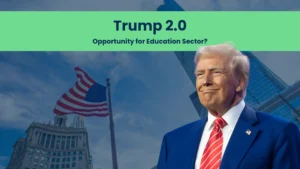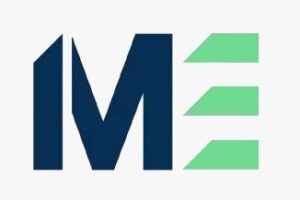For years, global education companies viewed India as a future market – large, promising, but complex.
2026 might change everything.
India has quietly (and now loudly) become the first-choice testing, scaling, and innovation market for global education brands. With transformative policy reforms, skyrocketing digital adoption, and the world’s largest learner base stepping into a new decade, India is now the epicentre of global education innovation.
This article unpacks why 2026 is that turning point and what global education companies must do to win in the world’s most exciting learning ecosystem.
India’s Unmatched Scale Makes It the Ultimate Learning Laboratory
When a country has nearly a quarter-billion students, innovation becomes inevitable.
According to India’s latest national school data, the country has:
- 248+ million students
- 1.47 million schools
- 9.7+ million teachers
This makes India the largest, most diverse education system in the world.
But scale alone isn’t the story, diversity is.
India offers a mix of:
- multiple boards (CBSE, ICSE, State Boards, IB, Cambridge, and more)
- 22 official languages
- urban, semi-urban, and rural learning environments
- public, private, independent, NGO-driven, and digital-first institutions
For education companies, this diversity functions as a rapid-iteration environment – a real-time, real-world R&D lab where products mature faster than in smaller, homogeneous markets.
A feature polished across five Indian states is often ready for global emerging markets.
The Education Market Is Now a Multi-Billion Opportunity
India’s EdTech and education services market has not only survived the post-pandemic recalibration, it is now accelerating again.
Industry analyses place India’s education and training sector among the world’s fastest-growing. Investments are flowing into:
- K–12 digital tools
- Foundational literacy & numeracy (FLN)
- Teacher professional development
- Special education needs (SEN)
- Skill development and employability
Global education companies increasingly see India not just as a distribution market but as a strategic region for product development, revenue expansion, and long-term scalability.
Policy Reforms Are Opening Doors for Global Innovators
The implementation of NEP 2020 (National Education Policy) and the nationwide NIPUN Bharat Mission has created unprecedented room for innovation.
These reforms prioritize:
- early childhood education (ECCE)
- foundational literacy & numeracy
- experiential learning
- digital classrooms
- teacher training & professional development
- global exposure and international pedagogies
In simpler terms:
India is actively looking for global education partners who can support high-impact reform.
This alignment of policy + demand + innovation is a dream scenario for international education companies.
The Global ‘Study Abroad’ Equation Has Changed
The world has watched a dramatic shift in global student mobility over the last two years.
Visa restrictions, rising tuition fees, geopolitical tensions, and uncertain job pathways have made learners reconsider traditional destinations like the U.S. and U.K.
This shift has triggered:
- Indian learners choosing hybrid + in-country international programs
- Global universities exploring India-based partnerships
- EdTech companies developing alternative credential ecosystems
Many global providers, from language learning platforms to vocational institutes are looking at India not just as a feeder market but as a delivery market.
2025 is the first year this shift becomes mainstream.
India Is Now the World’s Most Responsive Market for Education Pilots
For global education brands, the biggest bottleneck is not technology – it’s testing speed.
What takes 6–12 months to pilot in the West often takes 6–12 weeks in India, thanks to:
- highly proactive school networks
- fast decision-making in private schooling systems
- tuition centres hungry for differentiation
- a massive educator community open to innovation
And because ecosystems like IME simplify relationship-building, localisation and implementation, global companies can test:
- pricing
- pedagogy
- product design
- classroom implementation
- impact measurement
- teacher workflows
all within a single quarter.
For many founders, India becomes the most useful early market – not merely the biggest.
Digital Adoption Is Happening Faster Than Global Markets Realise
Digital learning in India is no longer limited to urban schools.
Through policy pushes, device penetration, and cost-effective internet, digital adoption is expanding in:
- Tier 2 & Tier 3 cities
- Government schools with CSR/NGO support
- Mid-tier private schools
- After-school and tuition networks
This digital foundation gives global companies the infrastructure required to operate at meaningful scale.
India Helps EdTechs Build More Inclusive, Research-Driven Products
Unlike many Western markets, India forces companies to think beyond:
- a single language
- a single device type
- a single economic class
- one learning environment
This makes India the best market to build:
- SEN-friendly features
- low-bandwidth experiences
- multilingual content
- teacher-facing toolkits
- printable hybrid resources
Products built in India tend to become stronger, more inclusive, and more globally exportable.
No wonder investors are urging global EdTechs to test in India.
The 2026 Playbook – How Global Education Companies Should Enter India
1. Start with a 60–90 Day Pilot, Not a Full Launch
Pilot small. Test early. Iterate fast.
2. Localise with Teachers, Not Translators
Teacher insights are the #1 predictor of adoption and retention.
3. Blend Digital + Print for Maximum Reach
Hybrid learning works best in India’s diverse school environments.
4. Build the Right Partnerships Early
Work with school groups, early adopters, teacher training institutions, and state networks.
5. Price for Value, But Enable Access
Tiered pricing, starter kits, and institutional bundles drive scale.
6. Measure Real Impact
Schools care about learning gains, not installs.
Measure outcomes like:
- reading accuracy
- writing fluency
- SEL indicators
- math mastery
- teacher time saved
7. Don’t Do It Alone
This is the step global companies often underestimate.
India requires trusted on-ground navigation, which is exactly where IME accelerates success.
Why 2026 Is a Window Global Companies Cannot Miss
India’s education ecosystem has matured faster in the past five years than in the two decades before it.
In 2025, three forces align perfectly:
- Scale
- Policy reform
- Digital readiness
Combined, they create the single strongest market entry moment for global education companies in modern history.
And the companies that enter early and enter correctly will shape the next decade of learning in Asia, the Middle East, and Africa.
About IME – Your Partner for Entering and Scaling in India
India Market Entry (IME) specialises in helping global education innovators navigate India’s diverse education ecosystem through:
- Market entry strategy
- Regulatory guidance
- Localisation & curriculum adaptation
- Strategic partnerships
- Implementation & teacher training
- National and regional outreach
- Demand generation and business development
If you’re exploring India in 2025, start with a conversation.
We’ll guide you from insight → pilot → partnerships → national scale.





